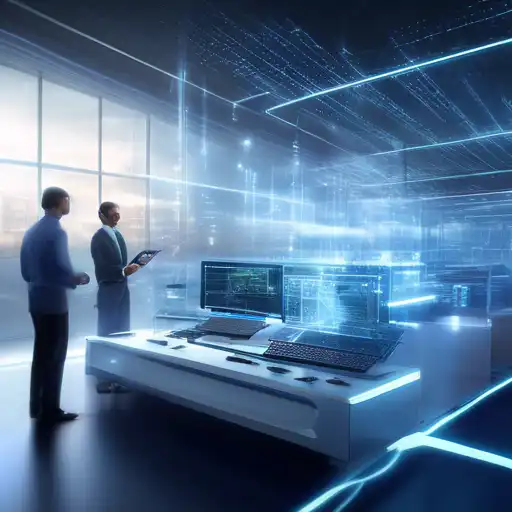Introduction to Edge Computing
In the digital age, speed and efficiency are paramount. Edge computing emerges as a transformative technology, bringing data processing closer to the source of data generation. This paradigm shift not only enhances speed but also reduces latency, paving the way for real-time analytics and decision-making.
What is Edge Computing?
Edge computing refers to the practice of processing data near the edge of your network, where the data is being generated, instead of in a centralized data-processing warehouse. This approach minimizes the distance data must travel, thereby reducing latency and bandwidth use.
Benefits of Edge Computing
- Reduced Latency: By processing data closer to its source, edge computing significantly decreases the time it takes for data to be processed and acted upon.
- Bandwidth Savings: Local data processing reduces the amount of data that needs to be sent to the cloud, saving bandwidth.
- Enhanced Privacy and Security: Processing data locally can help in keeping sensitive information within the premises, reducing exposure to potential breaches.
- Real-time Analytics: Immediate data processing enables real-time insights, crucial for industries like manufacturing and healthcare.
Edge Computing vs. Cloud Computing
While cloud computing relies on centralized data centers, edge computing distributes processing power to the periphery of the network. This doesn't mean edge computing will replace cloud computing; rather, it complements it by handling time-sensitive operations locally while the cloud manages less critical, long-term data storage and analysis.
Applications of Edge Computing
Edge computing is revolutionizing various sectors by enabling faster and more efficient data processing. Some notable applications include:
- Internet of Things (IoT): Edge computing is integral to IoT, allowing devices to process data on-site for immediate action.
- Autonomous Vehicles: Self-driving cars utilize edge computing to process vast amounts of data in real-time, ensuring safe navigation.
- Smart Cities: From traffic management to public safety, edge computing helps in making cities smarter and more responsive.
- Healthcare: Wearable devices and remote monitoring systems use edge computing to provide timely health insights.
Challenges and Considerations
Despite its benefits, edge computing comes with its set of challenges. These include the need for robust security measures, the complexity of managing distributed systems, and the initial setup costs. However, with continuous advancements, these challenges are being addressed, making edge computing more accessible and secure.
The Future of Edge Computing
As the demand for real-time processing grows, edge computing is set to play a pivotal role in the future of technology. With the advent of 5G and the expansion of IoT, the potential for edge computing is boundless, offering a faster, more efficient way to handle the ever-increasing volume of data.
Edge computing is not just a trend; it's a necessary evolution in our data-driven world. By bringing processing closer to the source, it ensures that we can keep up with the demands of modern technology and innovation.
